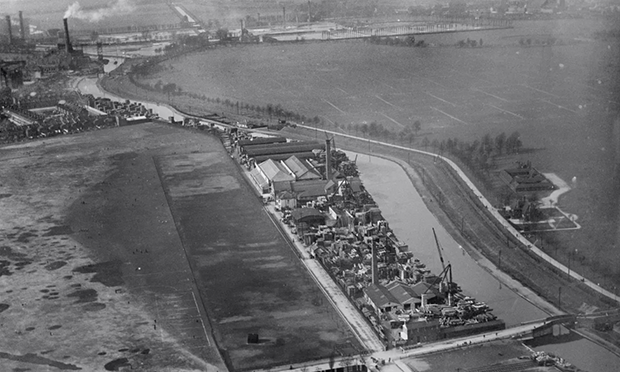New local heritage website reveals Hackney’s hidden history

An aerial photo of a Hackney Marshes, taken in 1921. Photograph: Historic England Archive
A new website launched by Historic England reveals the hidden histories behind some of Hackney’s listed buildings.
The Local Heritage Hub, unveiled to coincide with this year’s local history month, is packed with details on almost 400 locations across the country, with a dedicated page for every borough, county, major town and city.
Each page offers a wealth of content, including old photographs, information on historical buildings, and, in some cases, videos and podcasts.
It comes after a Historic England survey found that 71 per cent of respondents wanted to see more recognition of the history of their areas, with 51 per cent saying local heritage enhanced their lives.
Chief executive Duncan Wilson said: “Understanding and connecting with local heritage is an important part of building strong communities.
“With this new service, we hope people across England will be able to explore hidden histories, reconnect with their surroundings, and feel a sense of pride in their local area.
“I’d encourage everyone to explore the new Local Heritage Hub and see what they might discover about a place that means something to them.”
Hackney’s page contains aerial photographs of the borough, with one example a beautiful shot of a surprisingly barren Hackney Marshes, taken in 1921.
It also has detailed information on listed buildings and their histories.
Interestingly, the Grade II*-listed home of Cardinal Pole School on Victoria Park Road was once the French Protestant Hospital. Historic England calls it a “showpiece” of High Victorian ‘rogue’ Gothic architecture, and an “evocative reminder of the long-standing Huguenot presence in London”.
A Jewish cemetery on Lauriston Road was built in 1786, and at the time was the first in London to be laid out in a rural area, beyond the initial cluster around Whitechapel. The Grade II-listed site is described as an example of “Jewish burial customs and the assimilation of the community into British society”.
The famous F Cooke’s eel, pie and mash shop on Broadway Market also features. It opened in 1900, and the Cooke’s business is the oldest of the main pie and mash family chains in London. Historic England estimates that there are “only about 30 traditional shops still in existence, mainly concentrated in the East End and inner south-east”.
Tom Foxall, Historic England’s regional director for London, said: “The sheer amount of important local history and heritage in London and the South East can often be hidden by its incredible volume.”
He added: “Within every place there is something really remarkable that has changed and influenced the region we see today.”
You can peruse the Local Heritage Hub at historicengland.org.uk/local.
